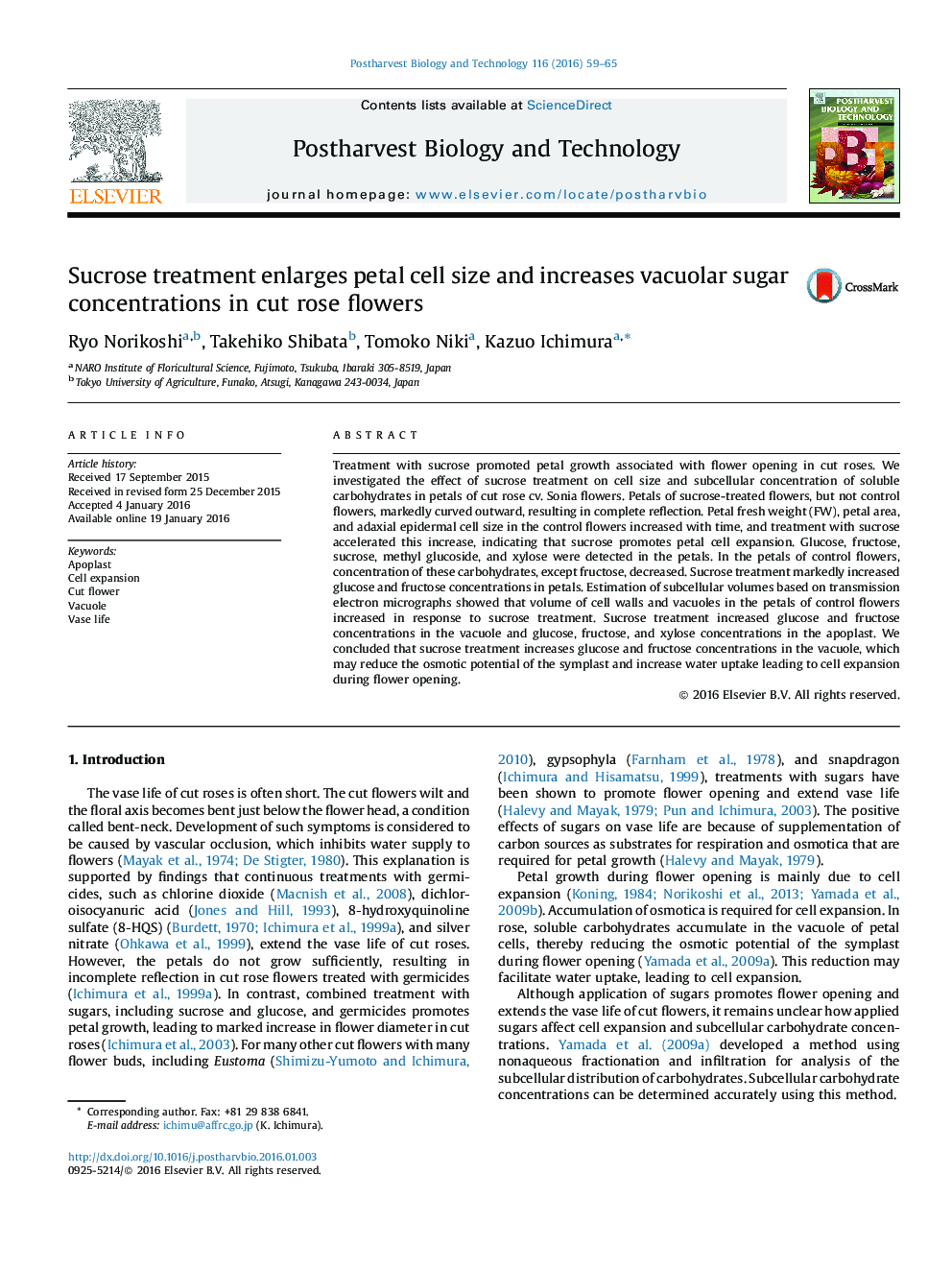| Article ID | Journal | Published Year | Pages | File Type |
|---|---|---|---|---|
| 4517817 | Postharvest Biology and Technology | 2016 | 7 Pages |
•Treatment with sucrose extended the vase life of cut rose.•Sucrose treatment increased petal fresh weight and size.•Increased petal size was due to increase in adaxial epidermal cell size.•Treatment with sucrose increased sugar contents in petals.•Sucrose treatment increased glucose and fructose levels in the vacuole and apoplast.
Treatment with sucrose promoted petal growth associated with flower opening in cut roses. We investigated the effect of sucrose treatment on cell size and subcellular concentration of soluble carbohydrates in petals of cut rose cv. Sonia flowers. Petals of sucrose-treated flowers, but not control flowers, markedly curved outward, resulting in complete reflection. Petal fresh weight (FW), petal area, and adaxial epidermal cell size in the control flowers increased with time, and treatment with sucrose accelerated this increase, indicating that sucrose promotes petal cell expansion. Glucose, fructose, sucrose, methyl glucoside, and xylose were detected in the petals. In the petals of control flowers, concentration of these carbohydrates, except fructose, decreased. Sucrose treatment markedly increased glucose and fructose concentrations in petals. Estimation of subcellular volumes based on transmission electron micrographs showed that volume of cell walls and vacuoles in the petals of control flowers increased in response to sucrose treatment. Sucrose treatment increased glucose and fructose concentrations in the vacuole and glucose, fructose, and xylose concentrations in the apoplast. We concluded that sucrose treatment increases glucose and fructose concentrations in the vacuole, which may reduce the osmotic potential of the symplast and increase water uptake leading to cell expansion during flower opening.
